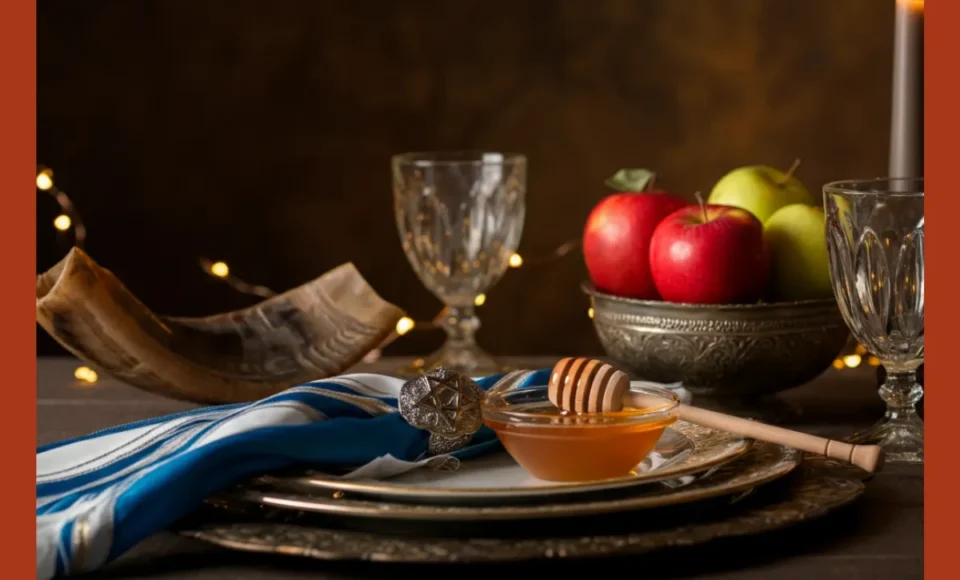As the first cool breezes of autumn sweep across the country, Jewish families in the USA and worldwide prepare for Rosh Hashanah, the beginning of the Jewish New Year. Over two meaningful days, this significant holiday marks the kickoff of the High Holidays—a period that calls for honest reflection, prayers, and treasured time with loved ones. But Rosh Hashanah is much more than a date on the calendar; it brings a chance to pause and look inward, to celebrate with intention, and to set a hopeful vision for the coming year.
What is Rosh Hashanah?
Rosh Hashanah means “head of the year” in Hebrew, and it commemorates the creation of Adam and Eve, marking humanity’s first steps. The celebration launches the Ten Days of Awe—a time of deep soul-searching, personal growth, and renewed purpose that ends with Yom Kippur, the Day of Atonement. Unlike the raucous fun of the secular New Year, Rosh Hashanah is solemn and meaningful. It asks each person to examine their year, seek forgiveness, and focus on becoming their best self moving forward. Central themes of the festival include reflection, renewal, divine judgment, and hope.
The Sound of the Shofar
One tradition that sets Rosh Hashanah apart is the blowing of the shofar, a horn crafted from a ram. Its resonant, ancient sound echoes in synagogues throughout the USA and beyond, cutting through daily worries as it calls everyone to wakefulness and reflection. The shofar’s cry is both a celebration and a reminder—urging us to remember what’s truly important, to seek spiritual growth, and to recognize God’s sovereignty.
Tekiah
A single, long, bold note that signals attention and calls the community together.
Shevarim
A trio of sobbing notes that tug at the heart, reflecting a yearning for improvement and reconnecting with faith.
Teruah
A rapid series of short blasts—like an alarm—meant to spark a sense of urgency for self-examination.
Key Traditions and Customs
Rosh Hashanah weaves together prayer and family, tradition and new beginnings. Community members take part in special services and rituals, turning meals and moments into occasions full of meaning.
Time-honored customs include:
- Unique Prayers: Special prayers and poems focus on hope, self-improvement, and making peace with others as we crown God as King.
- Joyful Meals: The holiday table overflows with delicious foods and familiar melodies, bringing together generations to share in the joy.
- Tashlich: On Rosh Hashanah’s first afternoon, many head outdoors to rivers or lakes for Tashlich, tossing pieces of bread into flowing water to let go of regrets and start fresh.
Symbolic Foods for a Sweet New Year
Food is a key part of Rosh Hashanah, each dish steeped in symbolism that expresses wishes for a sweet and successful year.
Some classic foods include:
- Apples and Honey: Slices of apple dipped in honey are the signature item for Rosh Hashanah, an edible wish for things to be sweet in the months ahead.
- Round Challah: Unlike the traditional braided challah, Rosh Hashanah features a round loaf. The shape reminds us of life’s endless cycles and the completeness of the year to come.
- Pomegranates: With their abundance of seeds, pomegranates stand for prosperity and the hope to do many good deeds—mirroring the 613 mitzvot, or commandments, in the Torah.
Distinguishing Rosh Hashanah from Yom Kippur
Although Rosh Hashanah and Yom Kippur are closely linked, each serves a special purpose on the Jewish calendar. Rosh Hashanah is the Day of Judgment, when people reflect and begin to write their stories for the year ahead in the figurative Book of Life. The days that follow—full of introspection and acts of kindness—culminate in Yom Kippur, when these judgments are sealed.
A Time for Celebration
Rosh Hashanah brings heartfelt celebrations, filled with gratitude and the joyous anticipation of new opportunities.
A Time for Atonement
Yom Kippur is more introspective, marked by fasting and prayers as people seek a fresh start through forgiveness.
The Book of Life
Between the two holidays, each person has the chance to reset, reflecting on their actions and asking to be inscribed in the Book of Life for health, happiness, and peace.
Conclusion: A Universal Message of Renewal
Rosh Hashanah speaks to all of us, offering a unique opportunity to reflect and set intentions for the coming year. Its cherished rituals—from the uplifting call of the shofar to the sweetness of apples and honey—invite everyone, Jewish or not, to consider how we can each begin anew and bring more kindness into the world. If you’d like to explore more about Jewish holidays and traditions, resources like the Jewish Virtual Library offer in-depth guides and historical insights. As communities across the USA gather together, these traditions continue to inspire hope, gratitude, and meaningful connections—setting the tone for a truly sweet new year.
You may also read : The Rapture: Unpacking a Timeless Mystery

